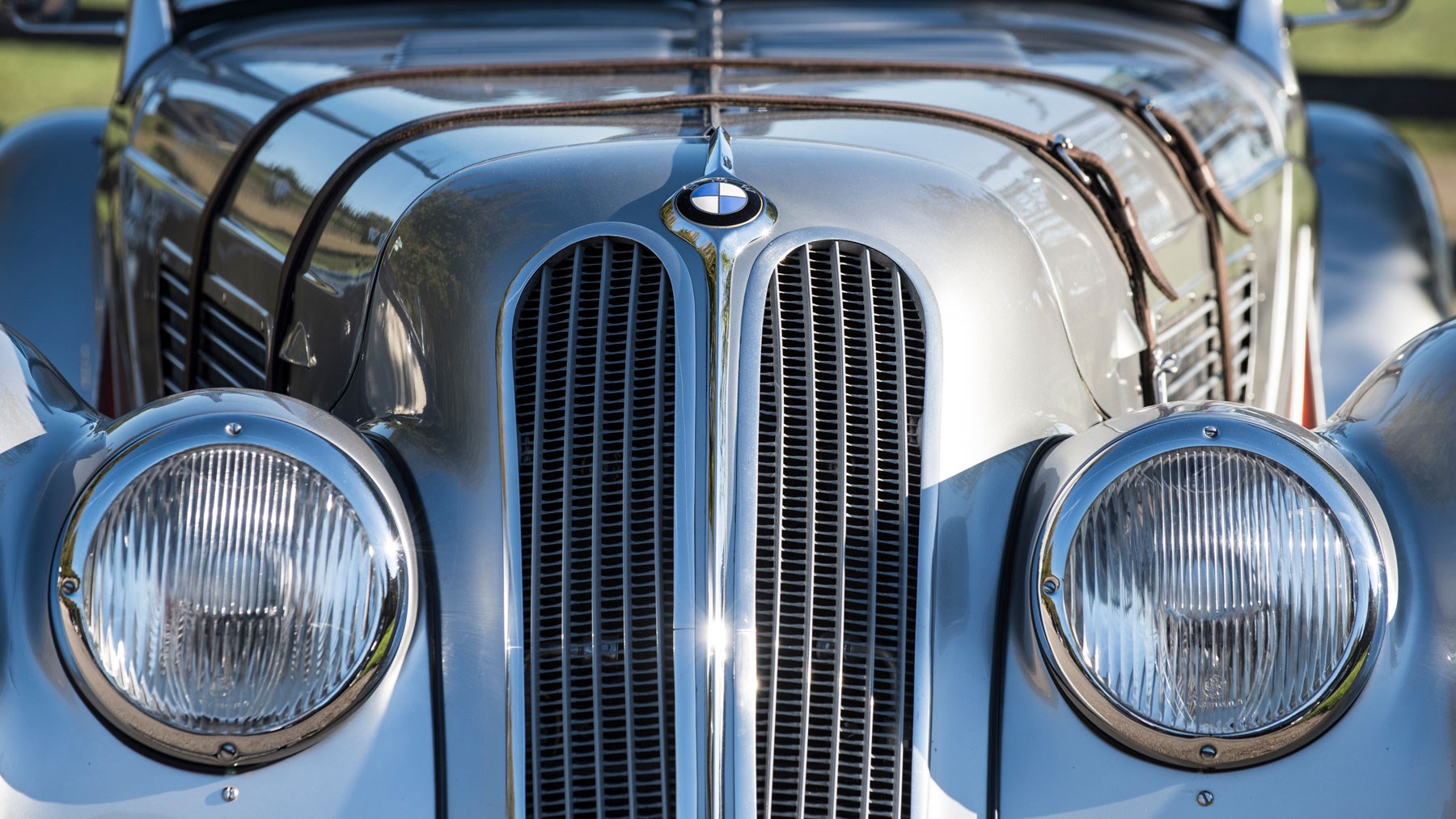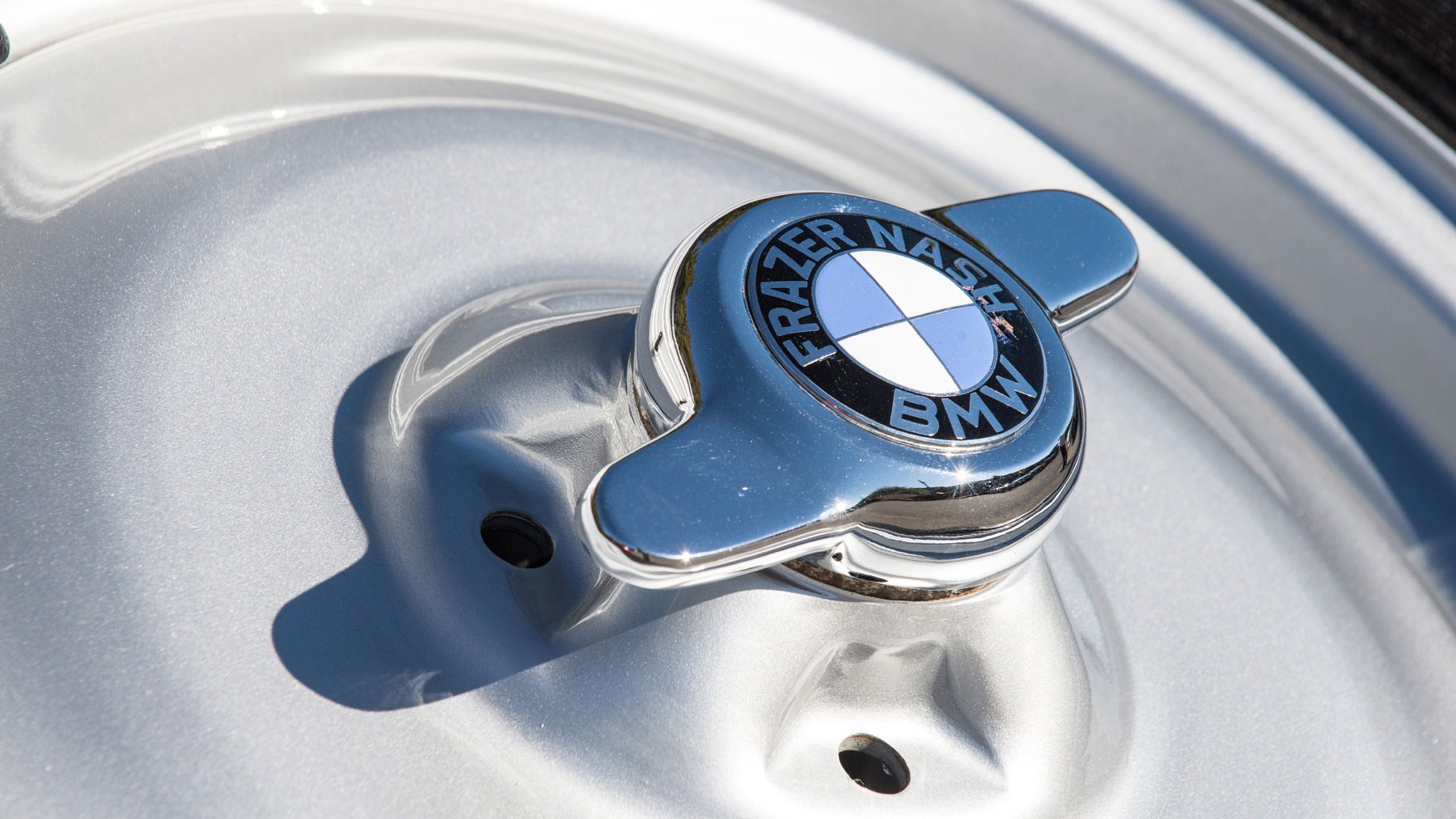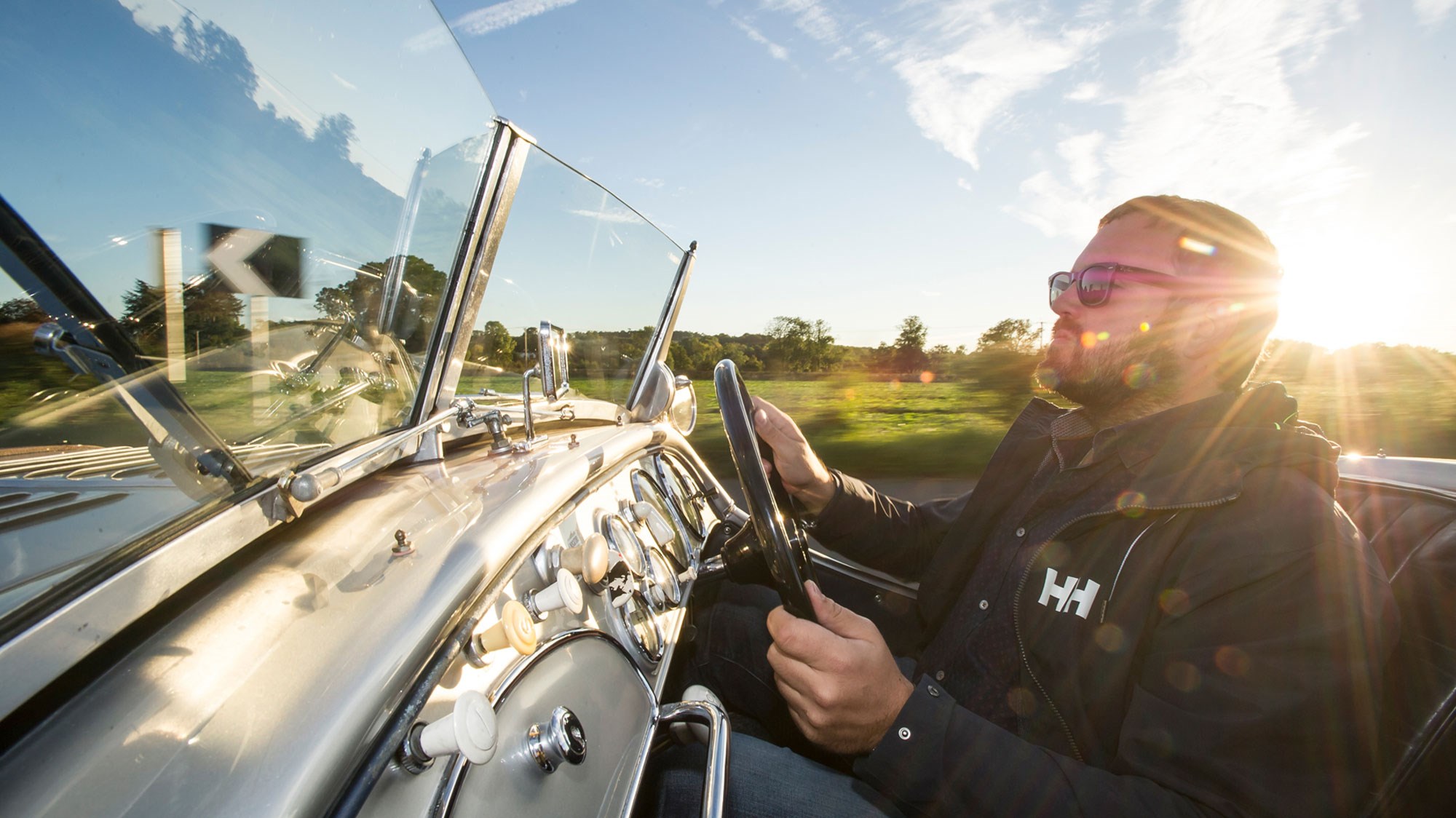► The fastest pre-WWII BMW
► 18bhp..
► One of only 42 cars ever sold in the UK
The BMW 328 represents a seminal moment. It was the fastest pre-WWII car the firm built, and through racing successes quickly built up a reputation so acclaimed, we reckon it’s one of the few cars ever to truly earn the moniker ‘icon’.
We recently drove one around the country roads near Marlow, Buckinghamshire, on a sunny afternoon to find out where the story of Munich’s roadsters really began.

Fill us in with some Bavarian background, then…
Or more precisely, where it took off, because there were a few before the 328. It all started in back in 1928 when BMW – a firm only producing aircraft engines and motorcycles – took over a factory in Eisenach that was building the Dixi, which was a German-built licenced version of the Austin 7. A number of bodystyles were built, but the DA3 was the car that started BMW’s roadster history, with streamlined coachwork ending in a boat-tail rear end and a heady 18bhp.
There followed a raft of opentop BMWs as the concept developed.
Fast-forward to 1936 and the car industry had moved on considerably. Companies like MG, Jaguar and Mercedes-Benz were building sports cars for racing, and having great success in international motorsport. BMW launched the 328 at the Eifelrennen event at the Nurburgring, driven by motorcycle land speed record holder Ernst Henne. He led from start to finish, positioning this roadster at the top table of international motorsport.
What made the BMW 328 so successful?
Its base configuration was a big contributing factor. In fact, we’re told 10% of cars sold were in chassis form, rather than with finished bodies.
The tubular chassis frame was carried over from previous BMWs – the 315/1 and 319/1 were shorter and thinner, but with the same track and width – and had two rails of 90mm diameter connected by three crossmembers along its length.

The doors, bonnet and tail panel were built of aluminium, and steel was used for the rest of the bodywork. Its kerbweight was as low as 830kg.
Performance came from a 2.0-litre straight-six motor with 80bhp at 5000rpm, meaning a high-for-the-era power-to-weight ratio of 10.3kg per bhp.
What about the car you’re driving here?
JHX340 is BMW GB’s own car – the first Frazer Nash-supplied 328 to make it onto British roads. It’s got race history at Brooklands and was completely restored in 2016 for the BMW Group’s centenary celebrations.
Flicking open the driver’s side door and climbing aboard, two things become immediately apparent: the cabin with two occupants is ‘cosy’, and the footwell housing the pedals is miniscule. Still, starting the car on the key, a beautiful inline-six burble had us eager to head out onto the road and put this stunning car to the test.
My size tens just about fit on the throttle independently of the other two pedals, but eventually I managed to get things sussed, the clutch down, and found first gear in the four-speed crash ‘box. It’s quite a stretch for the first ratio for this tester’s body proportions, but alas, we got it done eventually.
Again, the engine surprised with its manners, with smooth, progressive throttle response and a relatively easy-going nature. Considering the racing heritage the 328 has, this particular car felt configured more for the Mille Miglia than a circuit race like Le Mans, with sumptuous bolstering on the leather-covered seats and ride quality – even on leaf springs and a live rear axle, bettering some of BMW’s modern machinery…
Indeed, this car has competed in the Mille Miglia – the infamous road race around Italy – since its restoration in 2016.

Once we’d left the car park and hit the open road, the beautiful rack-and-pinion steering came to the fore. Unusually for cars of this vintage, there’s a complete absence of any sort of play here – it’s direct, extremely heavy and overflowing with chat about goings-on under the front cross-ply tyres. Elbows out in the typical vintage motoring style and we were away, carving a route through the countryside. You can use an unusual amount of carriageway in the 328 thanks to its diminutive width, making almost any drive a playful proposition.
The gearbox requires careful consideration to smooth-out progress, and rev-matching is a challenge given the mismatch betwixt feet and pedals, but get it right and it quickly becomes a most satisfying part of the experience. The motor obediently reacts to blips and it’s easy to time your downshifts if you double de-clutch. Heel-and-toe is impossible without racing footwear, though: it’s more like just ‘sole’ with our normal shoes on. Not the car’s problem…

BMW 328: verdict
With the sun shining on its gleaming silver coachwork, the sweeping lines leaping out of its silhouette at the end of our all-too-short 30-minute drive, it’s difficult not to feel humbled after driving such an important machine in almost-as-new condition. It’s one of only 42 cars ever sold in the UK, and a proper privilege to pilot.
It’s a reminder that roadsters are an integral part of BMW’s heritage – and why new Z4 designer Calvin Luk incorporated so many nods to the 328 in the new design.